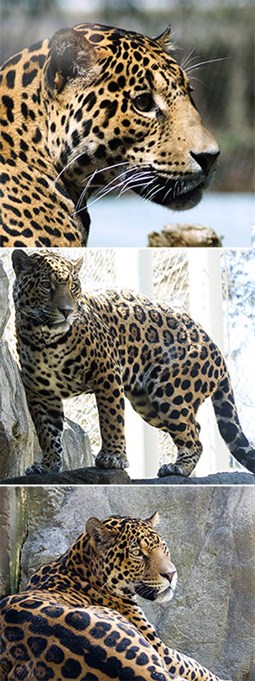Jaguar makes exhibit debut at Stone Zoo
Thursday April 14, 2016
 The staff at Stone Zoo is pleased to announce that a male jaguar can now be seen on exhibit within Treasures of the Sierra Madre.
The staff at Stone Zoo is pleased to announce that a male jaguar can now be seen on exhibit within Treasures of the Sierra Madre.
Seymour, a 2-year-old jaguar who recently arrived from Tulsa Zoo, has begun to explore his new exhibit. He will be on exhibit on Saturday and Sunday, and starting Monday will rotate going on exhibit with Chessie, an 8-year-old female jaguar that was born at Stone Zoo. Jaguars are solitary animals, only coming together during mating season.
Zoo New England participates in the Jaguar Species Survival Plan (SSP), which is a cooperative, inter-zoo program coordinated nationally through the Association of Zoos and Aquariums (AZA). SSPs are designed to maintain genetically diverse and demographically stable captive populations of species. Seymour’s arrival is the result of a breeding recommendation, and it is hoped that he and Chessie will successfully reproduce in the future.
“Seymour has quickly acclimated to his new space and he has settled in well. He is a very impressive cat and we are thrilled to welcome him to Stone Zoo, where he is sure to command the attention of visitors of all ages,” said John Linehan, Zoo New England President and CEO.
The jaguar is the largest cat and top predator in the western hemisphere. These animals are similar in appearance to the leopard but have a shorter tail, a broader head and a more powerful, stocky build. Rosette patterns on the jaguar’s coat, which provide excellent camouflage, are larger than the leopard’s and feature one or more central spots within the rosette. These animals, which are elusive and solitary, are native to Central and South America.
Visit Stone Zoo's Animals section to learn more about jaguars.

